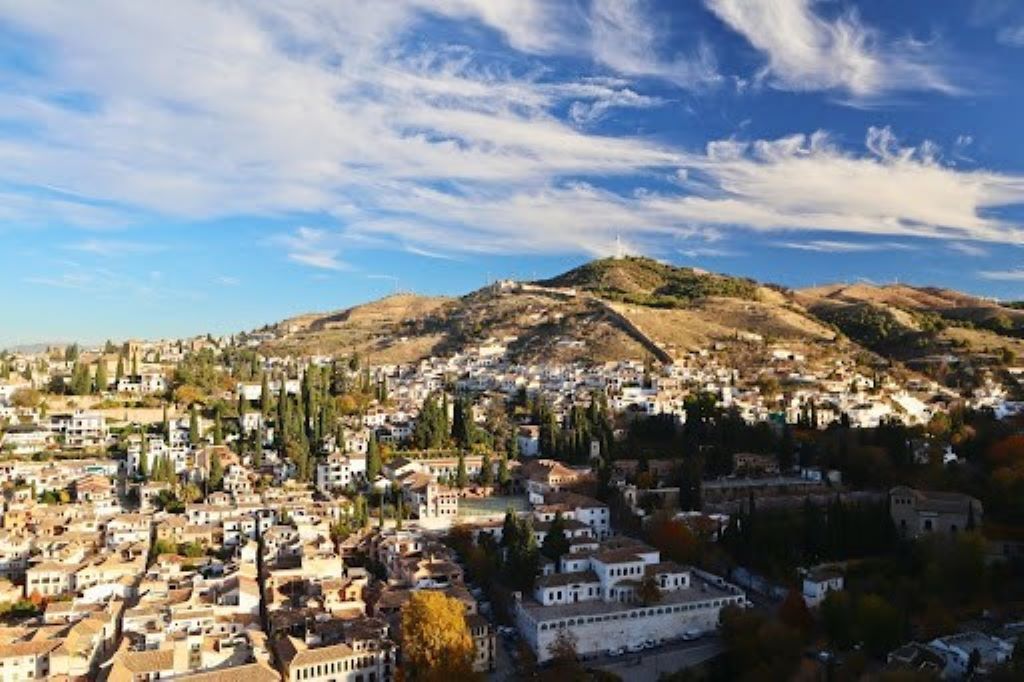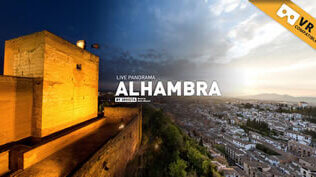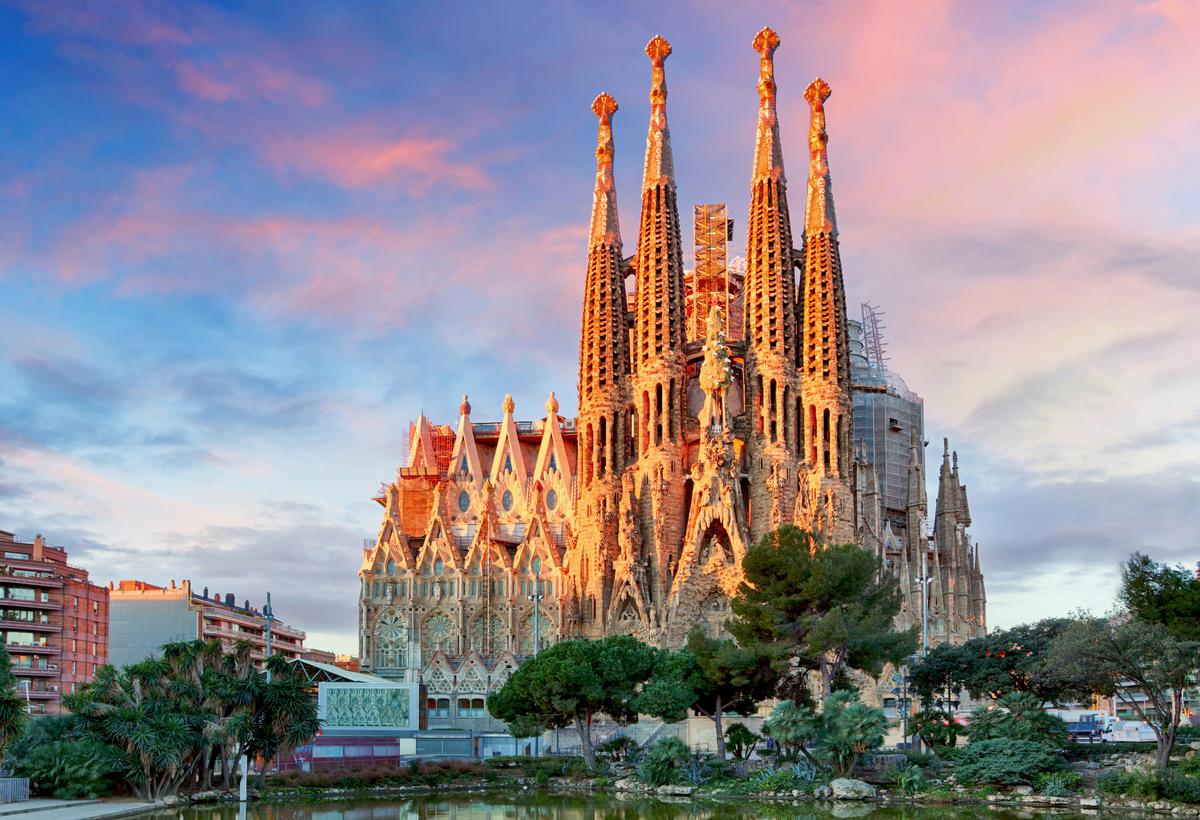Granada: A City of History, Culture, and Stunning Beauty
Introduction to Granada
Granada, nestled in the heart of Andalusia in southern Spain, is a city that effortlessly blends Moorish heritage with Spanish tradition. Known for its breathtaking Alhambra palace, labyrinthine Albayzín streets, and vibrant cultural scene, Granada is a destination that captivates visitors from around the world. The city’s unique charm lies in its ability to merge history and modernity, creating an unforgettable experience for anyone who walks its cobbled streets.
Granada’s rich past is evident in its architecture, food, and even the way of life of its people. Once the last stronghold of the Nasrid dynasty, the city still retains echoes of its Islamic roots, which harmoniously coexist with Christian influences. From the snow-capped Sierra Nevada mountains to the lively tapas bars, Granada is a place of contrasts and wonders.
The Alhambra: A Crown Jewel of Islamic Architecture
No visit to Granada would be complete without exploring the Alhambra, one of the most magnificent examples of Islamic architecture in the world. This sprawling palace and fortress complex was built in the 13th and 14th centuries by the Nasrid rulers and later modified by Christian monarchs after the Reconquista.
The Alhambra is divided into several key sections, each with its own distinct beauty. The Nasrid Palaces, with their intricate stucco work, delicate columns, and serene courtyards, offer a glimpse into the opulent life of Granada’s Moorish rulers. The Generalife, the summer palace and gardens, provides a tranquil escape with its fountains, fragrant flowers, and perfectly manicured hedges. The Alcazaba, the oldest part of the complex, offers panoramic views of the city and the surrounding mountains.
One of the most famous spots within the Alhambra is the Patio de los Leones (Court of the Lions), where a central fountain supported by twelve marble lions stands as a masterpiece of medieval craftsmanship. The fusion of water, light, and architecture in the Alhambra creates an almost magical atmosphere, making it a UNESCO World Heritage Site and a must-visit for anyone traveling to Spain.
The Albayzín: A Journey Through Time
Granada’s Albayzín neighborhood is another must-see destination, offering a trip back in time to the city’s Moorish past. This medieval quarter, also a UNESCO World Heritage Site, is a maze of narrow, winding streets, whitewashed houses, and hidden plazas that evoke the ambiance of old Al-Andalus.
A key feature of the Albayzín is its carmenes—traditional houses with walled gardens that provide secluded oases in the heart of the city. Visitors can stroll along the Carrera del Darro, a picturesque street that runs along the Darro River, offering stunning views of the Alhambra from below.
For one of the best vistas of Granada, a visit to the Mirador de San Nicolás is essential. This lookout point provides a postcard-perfect view of the Alhambra set against the Sierra Nevada mountains, especially breathtaking at sunset when the palace glows in golden hues.
The Albayzín is also a great place to experience Granada’s bohemian side, with its tea houses (teterías), flamenco venues, and artisan shops that keep the spirit of Andalusia alive.
Sacromonte: The Soul of Flamenco and Gypsy Culture
Just beyond the Albayzín lies Sacromonte, a neighborhood famous for its cave dwellings and deep ties to flamenco music. The Roma (Gypsy) community has long called this area home, and their influence is felt in the passionate performances that take place in the zambras—intimate, candlelit venues where flamenco is performed in its most authentic form.
The caves of Sacromonte, many of which are now used as homes, restaurants, and performance spaces, add to the area’s mystique. Visitors can tour some of these caves to learn about their history and significance in Granada’s cultural landscape.
At night, Sacromonte comes alive with the rhythms of flamenco, offering visitors a chance to experience the raw emotion and skill of this quintessentially Andalusian art form. A night in Sacromonte is often described as one of the most unforgettable experiences in Granada.
Granada’s Gastronomy: A Feast for the Senses
Granada is also a paradise for food lovers, particularly those who enjoy tapas. Unlike many other Spanish cities, Granada maintains the delightful tradition of serving free tapas with every drink ordered at a bar. This means visitors can enjoy a culinary tour of the city while sipping on local wines or beers.
Some of the must-try dishes include:
- Habas con jamón (broad beans with ham)
- Tortilla del Sacromonte (a rich omelet made with brains and other offal)
- Piononos (sweet pastries from the nearby town of Santa Fe)
Granada’s cuisine reflects its cultural diversity, with influences from both Moorish and Spanish traditions. The city’s markets, such as Mercado San Agustín, offer fresh local produce and a chance to mingle with locals while sampling regional specialties.
The Cathedrals and Churches of Granada
While Islamic history dominates much of Granada’s architectural landscape, the city also boasts impressive Christian monuments. The Granada Cathedral, begun in the 16th century after the Reconquista, is a masterpiece of Spanish Renaissance architecture. Its grand façade and towering interior columns are awe-inspiring.
Adjacent to the cathedral is the Royal Chapel (Capilla Real), the final resting place of Catholic Monarchs Ferdinand and Isabella, who played a pivotal role in Spain’s history. The chapel houses their ornate tombs and an impressive collection of religious art.
Other notable churches include the Basilica of San Juan de Dios, a Baroque gem with an exuberantly decorated interior, and the Monastery of San Jerónimo, a serene retreat with a stunning cloister.
(To be continued...)
The Sierra Nevada: Nature’s Playground Near Granada
Just a short drive from the bustling streets of Granada lies the Sierra Nevada, Spain’s highest mountain range and a paradise for outdoor enthusiasts. Known for its winter sports, the Sierra Nevada Ski Resort attracts skiers and snowboarders with its powdery slopes and long seasons, often lasting well into spring. But beyond skiing, the mountains offer year-round activities, from hiking and mountain biking to paragliding and birdwatching.
One of the most rewarding hikes is the ascent to Mulhacén, the highest peak in mainland Spain at 3,482 meters (11,424 feet). The trail offers breathtaking views of the Alpujarras region, with its picturesque white villages clinging to the mountainsides. The Alpujarras themselves are worth exploring, with charming towns like Pampaneira and Trevélez (famous for its cured ham) showcasing traditional Andalusian culture.
For those who prefer a more relaxed experience, the Sierra Nevada’s natural hot springs, such as those in Lanjarón or Alhama de Granada, provide a perfect way to unwind while surrounded by stunning scenery.
The University of Granada: A Center of Knowledge and Youthful Energy
As one of Spain’s oldest and most prestigious universities, the University of Granada (UGR) infuses the city with youthful energy and intellectual vibrancy. Founded in 1531 by Emperor Charles V, the university has grown into a leading academic institution, attracting students from all over Spain and the world.
The UGR’s historic buildings, such as the Palace of La Madraza (originally a 14th-century Islamic school), are architectural gems. Meanwhile, its modern campuses, including the expansive Ciencias de la Salud complex, highlight Granada’s ability to blend tradition with innovation. The student population ensures a lively nightlife, with countless bars, clubs, and cultural events catering to young tastes.
Every spring, the university’s Corpus Christi Fair (Feria de Granada) transforms the city into a week-long celebration, featuring flamenco, horse parades, and colorful casetas (festive tents).
Granada’s Festivals: A Year-Round Celebration of Culture
Granada’s calendar is packed with festivals that showcase its deep-rooted traditions and modern creativity. Some of the most notable include:
- Semana Santa (Holy Week): Granada’s religious processions are among Spain’s most moving, with hooded penitents and elaborate floats winding through the streets.
- Feria del Corpus: A mix of religious and secular festivities, this fair features bullfighting, live music, and dancing late into the night.
- International Festival of Music and Dance: Held in June and July, this prestigious event brings world-class performers to historic venues like the Alhambra’s Generalife.
- Día de la Cruz (Day of the Cross): On May 3rd, the city erupts in color as streets and squares are adorned with floral crosses.
These festivals offer visitors a chance to immerse themselves in Granada’s living culture, where every celebration tells a story.
Granada’s Lesser-Known Gems: Hidden Treasures to Discover
Beyond its famous landmarks, Granada holds many under-the-radar spots that reward curious travelers:
- El Bañuelo: A remarkably preserved 11th-century Arab bathhouse hidden near the Darro River.
- Casa de los Tiros: A museum showcasing Granada’s history through art, weapons, and curiosities.
- Carmen de los Mártires: A lush, secluded garden with stunning Alhambra views.
- Monasterio de la Cartuja: A Baroque monastery with an unexpectedly lavish interior.
These hidden corners reveal layers of Granada’s history often missed by guidebooks.
Granada for Art Lovers: From Renaissance Masters to Street Art
Art enthusiasts will find Granada a fascinating destination. The Museum of Fine Arts houses works by Alonso Cano, a 17th-century Granadino painter, while the José Guerrero Center focuses on contemporary art. Even the street art scene thrives, with murals in the Realejo quarter blending modern graffiti with Arabic calligraphy.
Ceramics, silk weaving, and taracea (wood inlay) workshops continue centuries-old artisan traditions. Visitors can watch craftsmen at work in the Alcaicería, the old silk market, or at studios around the city.
Practical Tips for Visiting Granada
To make the most of a Granada trip, keep these tips in mind:
- Alhambra tickets: Book months in advance—this UNESCO site sells out fast.
- Transport: The city is walkable, but buses connect key areas. The Alhambra bus (C30/C32) is especially useful.
- Timing: Spring and fall offer pleasant weather; summer can be scorching.
- Dress code: Comfortable shoes are a must for cobbled streets and steep hills.
- Language: While many speak English, learning basic Spanish phrases enriches interactions.
The Legacy of Federico García Lorca
Granada was home to Federico García Lorca, one of Spain’s greatest poets and playwrights. Visitors can explore sites tied to his life:
- Huerta de San Vicente: Lorca’s summer home, now a museum with original furnishings.
- Fuente Grande: The spring near Viznar where he was tragically executed in 1936.
- Lorca Center: A museum dedicated to his work and influence.
Lorca’s spirit lingers in Granada’s cultural fabric, from theater performances to festivals honoring his legacy.
(To be continued...)
Granada by Night: A City That Never Truly Sleeps
While many Spanish cities come alive after dark, Granada takes nighttime enchantment to another level. The illuminated Alhambra glowing against the midnight sky creates an almost mythical atmosphere. Evening strolls through the Albayzín reveal hidden flamenco bars where spontaneous performances erupt, while the sound of distant guitar music drifts through flower-filled courtyards.
For a truly unforgettable experience, visitors can book a night tour of the Alhambra's Nasrid Palaces, when crowds thin and the moonlit courtyards take on an ethereal quality. Late-night tapas crawls through the Realejo neighborhood showcase Granada's legendary culinary generosity—some bars even offer upgraded tapas portions during the wee hours to cater to the city's nocturnal crowd.
Granada Beyond the City: Day Trips to Remember
The Granada province offers spectacular excursions worth building into any itinerary:
- Las Alpujarras: This mountainous region southeast of Granada preserves traditional Berber-style villages like Capileira and Bubión, with their distinctive flat-roofed houses and artisan workshops. The Poqueira Gorge offers spectacular hiking trails.
- Guadix and Purullena: About an hour northeast, these towns are famous for cave dwellings turned into modern homes, some available for overnight stays. Guadix's cathedral combines Gothic, Renaissance, and Baroque elements.
- Coast of Granada: The tropical coastline around Almuñécar mixes Roman ruins with subtropical fruit plantations and black sand beaches. The 16th-century San Miguel Castle offers panoramic Mediterranean views.
- Antequera Dolmens: A UNESCO-listed collection of megalithic monuments dating back over 5,000 years, within easy reach by car.
The Water Culture of Granada: Fountains, Acequias, and Ancient Engineering
Granada's intricate water systems represent one of its greatest Moorish legacies. The acequias—ancient irrigation channels originally built by the Romans and perfected by Islamic engineers—still feed the Generalife gardens and flow through hidden tunnels beneath the city. Historians estimate the Alhambra's network includes over 10 kilometers of waterways featuring:
- Ingenious hydraulic lifting devices
- Precise gradient calculations enabling continuous flow
- Decorative fountains that double as cooling systems
Modern visitors can follow "water walks" tracing routes like the Acequia Real or spot historic public fountains including the 16th-century Fuente del Toro in Plaza del Realejo.
Granada's Architectural Evolution: From Zirid to Contemporary
Beyond its iconic Moorish and Renaissance structures, Granada boasts stunning architectural diversity:
- Neoclassical: The Correos (post office) building on Puerta Real
- Modernist: Casa de los Girones on Calle San Antón
- Contemporary: The striking Granada Congress Center by Alberto Campo Baeza
The city's newest landmark, the Granada Science Park, features interactive exhibits housed in sleek, light-filled pavilions contrasting beautifully with the historic skyline.
Shopping in Granada: From Souvenirs to High Fashion
Shopping enthusiasts will find diverse options:
- Traditional Crafts: The Alcaicería market sells ceramic pomegranates (Granada's namesake), inlaid wooden boxes, and handmade guitars
- Local Designers:- Gourmet Goods: Delicacies like extra virgin olive oil from nearby Montefrío at Mercado San Agustín
- Antiques: Hidden gems in the Realejo's small vintage shops
For contemporary shoppers, the Neptuno shopping center offers international brands just steps from historic sites.
Family-Friendly Granada: Activities for All Ages
Far from being just a destination for history buffs, Granada delights younger visitors with:
- Science Park: Hands-on experiments and planetarium shows
- Bike Tours: Gentle downhill rides from the Alhambra through orchards
- Títeres Museum: Showcasing traditional Spanish puppetry
- Sierra Nevada: Winter sledding or summer hiking with dedicated kids' programs
Many restaurants happily accommodate families, with some offering special children's tapas menus.
Accessible Granada: Experiencing the City for All Abilities
Recent improvements have made key attractions more accessible:
- The Alhambra provides adapted routes and wheelchairs
- Most museums offer tactile models and audio guides
- The modern metro system has full elevator access
- Many Albayzín viewpoints can be reached via taxi
Local organizations like ONCE provide excellent resources for travelers with specific accessibility needs.
The Future of Granada: Preservation and Innovation
Granada faces the delicate balancing act of preserving its priceless heritage while embracing modernity. Current initiatives include:
- Restoration of lesser-known Nasrid palaces outside the Alhambra
- Sustainable tourism programs limiting visitor numbers
- University-led innovation hubs attracting tech startups
- Expansion of pedestrian zones in the historic center
The planned high-speed rail connection to Madrid promises to bring more visitors while potentially easing congestion.
Conclusion: Why Granada Stays With You
Granada doesn't merely impress—it lingers in the memory like the fragrance of orange blossoms in its patios. From the mathematical perfection of the Alhambra's tile patterns to the raw emotion of a Sacromonte flamenco performance, the city engages all senses. Its greatest magic lies in the interplay between past and present, where college students debate philosophy in plazas built for Moorish scholars, and where every sunset makes the ancient stones glow anew.
As poet Francisco de Icaza wrote: "There is nothing more sad in life than being blind in Granada." Whether you come for history, art, food, or scenery, Granada ensures you'll leave with vision expanded and soul nourished—and likely already planning your return.









Comments